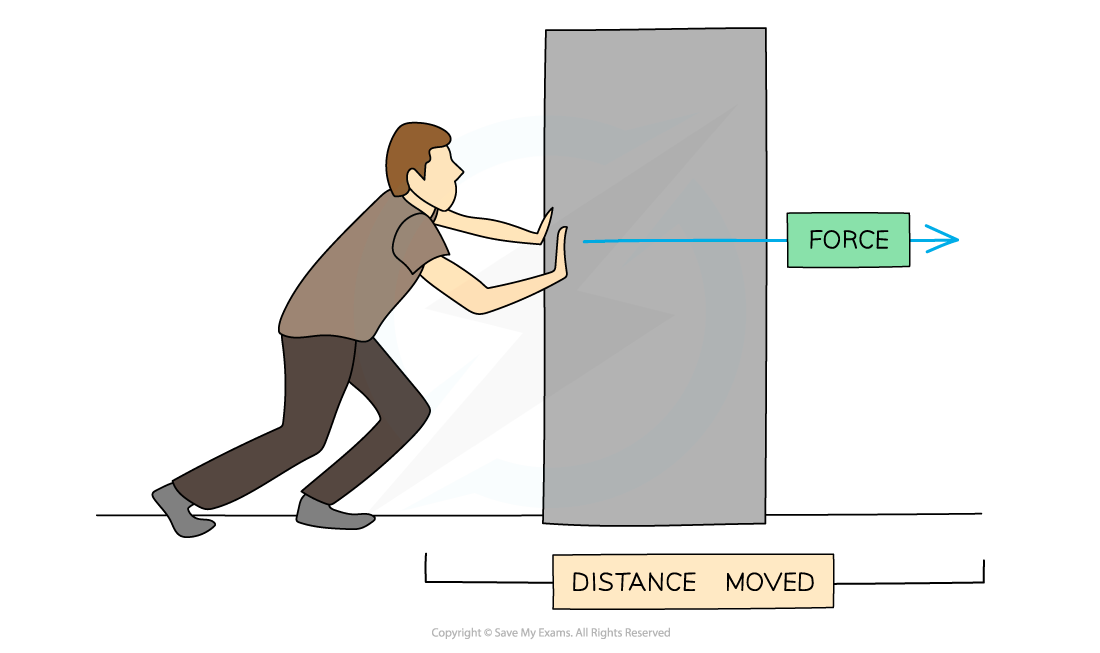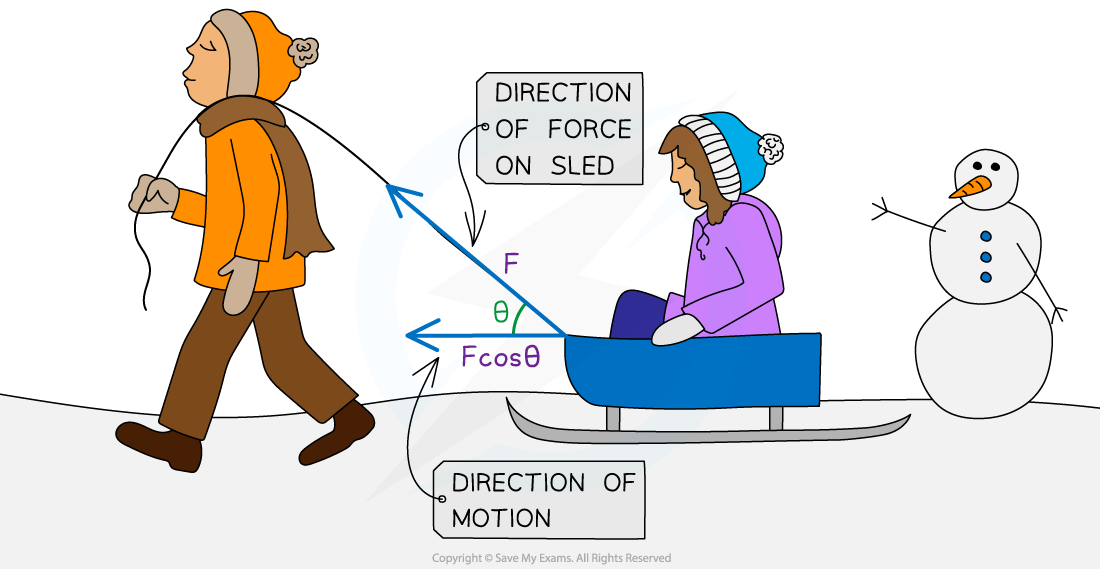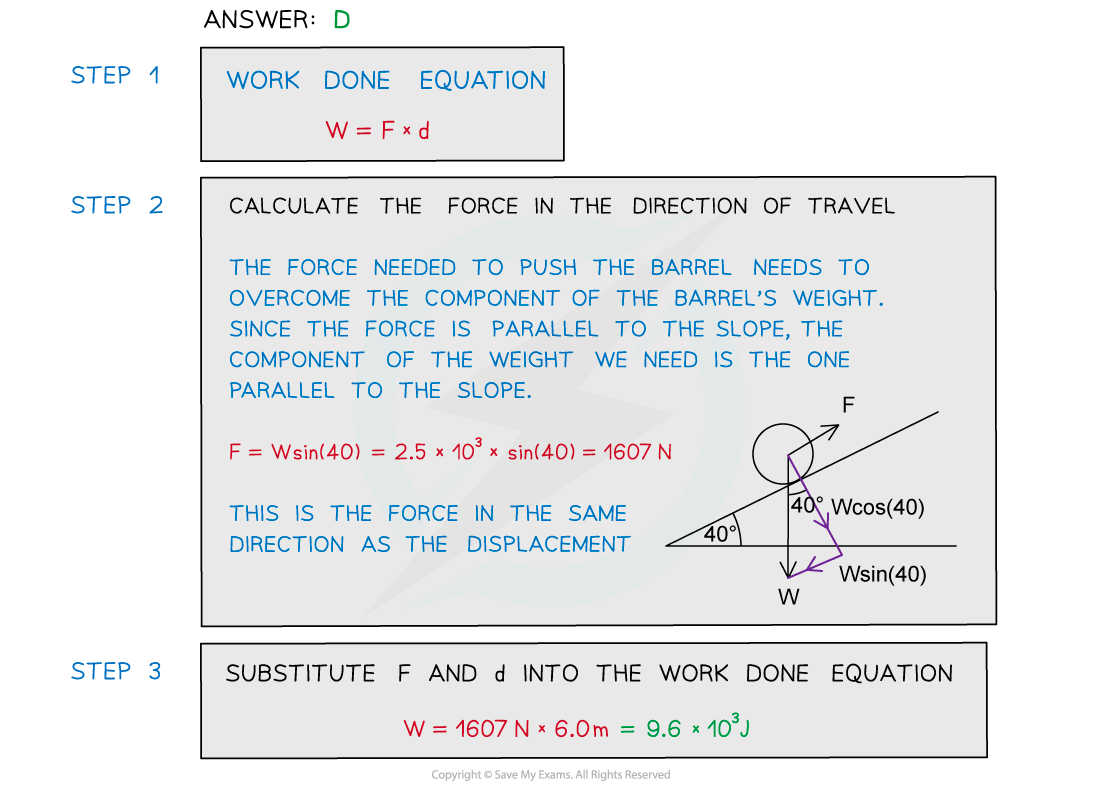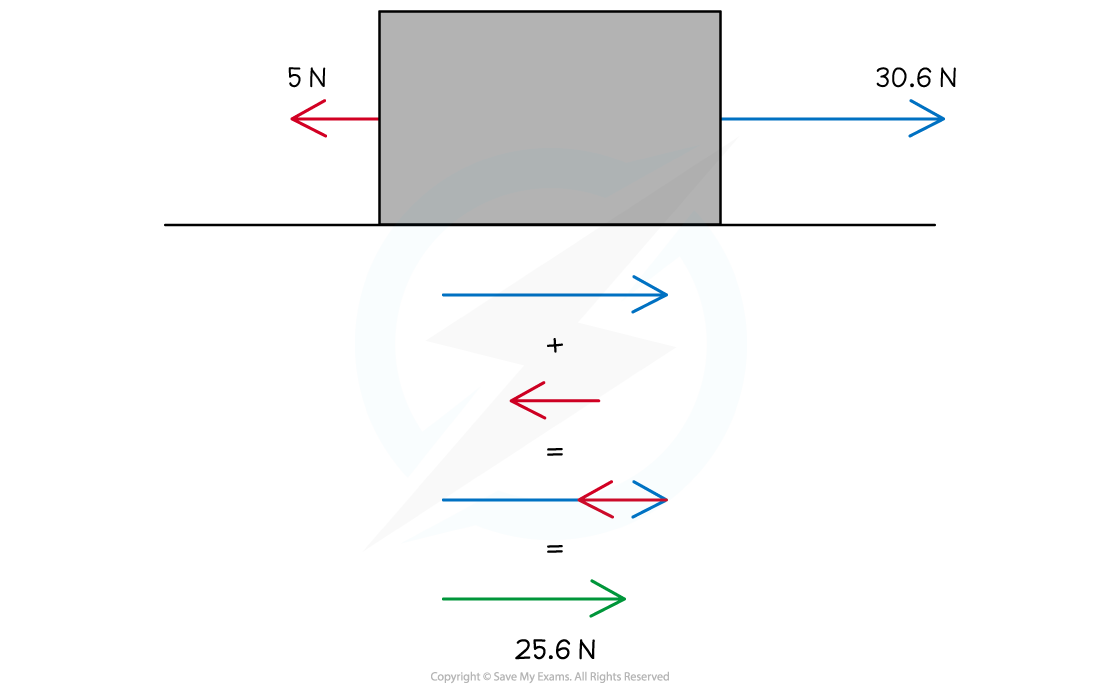Work Done (DP IB Physics) : Revision Note
Work Done
The work done by a force is equivalent to a transfer of energy
The units of work done are newton metres
1 N m = 1 J
The work done by a resultant force on a system is equal to the change in energy in that system
Mechanical work is defined as
The transfer of energy when an external force causes an object to move over a certain distance
If a constant force is applied in the line of an object's displacement (i.e. parallel to it), the work done can be calculated using the equation:
Where:
W = work done (J)
F = constant force applied (N)
s = displacement (m)
In the diagram below, the man’s pushing force on the block is doing work as it is transferring energy to the block

Work is done when a force is used to move an object over a distance
When pushing a block, work is done against friction and energy is transferred from the man to the block
The kinetic energy is transferred to other forms of energy such as heat and sound
When plotting a graph of average force applied against displacement, the area under the graph is equal to the work done
Sometimes the direction of motion of an object is not parallel to the direction of the force
If the force is at an angle θ to the object's displacement, the work done is calculated by:
Where θ is the angle, in degrees, between the direction of the force and the motion of the object
When θ is 0 (the force is in the direction of motion) then
and
For horizontal motion, cos θ is used
For vertical motion, sin θ is used
Always consider the horizontal and vertical components of the force
The component needed is the one that is parallel to the displacement

When the force is at an angle, only the component of the force in the direction of motion is considered for the work done
Worked Example
The diagram shows a barrel of weight 2.5 × 103 N on a frictionless slope inclined at 40° to the horizontal.

A force is applied to the barrel to move it up the slope at a constant speed. The force is parallel to the slope.
What is the work done in moving the barrel a distance of 6.0 m up the slope?
A. 7.2 × 103 J
B. 2.5 × 104 J
C. 1.1 × 104 J
D. 9.6 × 103 J

Worked Example
An 80 kg person pulls a 15 kg box along using a rope which is at 40° from the horizontal as shown below. The person is pulling with a force of 40 N and moves the box 20 m horizontally from its starting position against a constant friction force of 5.0 N.
Calculate the work that has been done on the box in the direction of its motion.

Answer
Step 1: List the known quantities
The angle between the rope and the horizontal, θ = 40°
The pulling force (along rope) = 40 N
Horizontal distance moved by box, s = 20 m
Frictional force = 5.0 N
Step 2: Resolve the pulling force in the rope into its horizontal component

The horizontal component of the pulling force is the only part of the pulling force aligned with the direction of work
Hence, that is the component that is needed to continue solving this problem
The horizontal component can be resolved from:
to the right
Step 3: Find the resultant force for the motion
The resultant force can be found from the interaction between the horizontal component of the pulling force and the friction force:

to the right
Step 4: Calculate the work done
Use the equation for work done given the resultant force and distance moved in the horizontal plane
The cos θ has already been accounted for so that the resultant force could be found when combined with friction
Therefore:
W = 512 J
Examiner Tips and Tricks
Sometimes exam questions will include more values than you need to use in the solution - this is purposefully done to confuse you. For example, in the second worked example above, the question supplies the mass of the person and the box, however, these quantities are not needed for the calculation.
Always consider the horizontal and vertical components of the force. The component needed is the one that is parallel to the displacement. The equation with is given on your data sheet, but you only need to use this if the force is applied at an angle to the displacement.

You've read 0 of your 5 free revision notes this week
Sign up now. It’s free!
Did this page help you?
